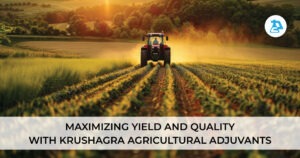Introduction:
Biofertilizers play a crucial role in sustainable agriculture by providing essential nutrients to crops while minimizing environmental harm. When it comes to leguminous crops, which have a natural ability to fix atmospheric nitrogen through symbiotic relationships with nitrogen-fixing bacteria, the selection of the right biofertilizer becomes even more critical. This guide aims to help farmers and gardeners understand the factors involved in choosing the appropriate biofertilizer for specific leguminous crops based on their nitrogen requirements.
Understanding Leguminous Crops and Nitrogen Fixation:
Leguminous crops such as soybeans, peas, lentils, and various types of beans have a unique ability to form a symbiotic relationship with nitrogen-fixing bacteria called rhizobia. These bacteria take atmospheric nitrogen and convert it into a form that plants can utilize, thereby reducing the reliance on synthetic nitrogen fertilizers. This process, known as nitrogen fixation, enhances soil fertility, promotes plant growth, and reduces the need for additional nitrogen inputs.
Factors to Consider for Selecting Biofertilizers:
Crop Type: Different leguminous crops have varying nitrogen requirements. For instance, soybeans are known to fix a substantial amount of nitrogen, while other legumes may have different rates. Understanding the specific crop’s nitrogen demands is crucial in determining the appropriate biofertilizer.
Rhizobial Strain Compatibility
Each leguminous crop has a specific strain or strains of rhizobia that are compatible with it. It is essential to select a biofertilizer that contains the appropriate strain for the target crop. Ensuring compatibility guarantees optimal nitrogen fixation and overall crop health.
Soil Conditions
Soil pH, organic matter content, moisture levels, and other soil characteristics can influence the performance of biofertilizers. Conducting a soil analysis to determine the existing nutrient levels and pH can help identify any deficiencies or imbalances that may impact the selection of the biofertilizer.
Types of Biofertilizers for Leguminous Crops
Pure Culture Biofertilizers
These biofertilizers consist of specific strains of rhizobia that are compatible with a particular leguminous crop. They are available in the form of seed inoculants or carrier-based formulations. Pure culture biofertilizers are easy to apply and ensure the presence of effective rhizobial strains for optimal nitrogen fixation.
Composite Biofertilizers
These biofertilizers contain a blend of beneficial microorganisms, including rhizobia, mycorrhizal fungi, and phosphate solubilizing bacteria. They not only provide nitrogen fixation but also enhance nutrient availability and plant growth. Composite biofertilizers are particularly useful in soils with multiple nutrient deficiencies.
Application and Maintenance:
To ensure successful biofertilizer application, follow these steps:
Seed Treatment
Coating the seeds with the appropriate biofertilizer ensures direct contact between the rhizobia and the developing root system. This step improves the establishment of the symbiotic relationship.
Rhizosphere Inoculation
Apply the biofertilizer near the root zone during sowing or transplantation. This technique helps rhizobia establish themselves around the roots, enabling effective nitrogen fixation.
Monitoring and Maintenance
Regularly monitor crop health, growth, and nitrogen levels throughout the growing season. Adjustments in biofertilizer application or other nitrogen inputs may be necessary based on observed deficiencies or excessive nitrogen levels.
Choosing the right biofertilizer for leguminous crops is crucial for maximizing nitrogen fixation and overall crop productivity. By considering factors such as crop type, rhizobial strain compatibility, and soil conditions , farmers and gardeners can make informed decisions when selecting biofertilizers. Whether opting for pure culture biofertilizers or composite biofertilizers, it is essential to ensure that the chosen product contains the appropriate strains of rhizobia and beneficial microorganisms.
Additionally, implementing proper application techniques, such as seed treatment and rhizosphere inoculation, helps establish a strong symbiotic relationship between the leguminous crop and the biofertilizer. Regular monitoring of crop health and nitrogen levels allows for adjustments in biofertilizer application or supplementary nitrogen inputs as needed.
It is worth noting that biofertilizers are not a one-size-fits-all solution. Each leguminous crop and farming system may have unique requirements. Therefore, farmers should consult with agricultural experts, extension services, or biofertilizer manufacturers to ensure the best possible match between the crop’s nitrogen needs and the selected biofertilizer.
Moreover, integrating biofertilizers into a comprehensive nutrient management plan can further optimize the benefits. This plan may include practices such as crop rotation, cover cropping, organic matter addition, and soil conservation measures. By adopting a holistic approach, farmers can enhance soil health, reduce reliance on synthetic fertilizers, and promote sustainable agricultural practices.
Conclusion
In conclusion, selecting the right biofertilizer for specific leguminous crops and their nitrogen needs is crucial for maximizing nitrogen fixation, improving soil fertility, and ensuring healthy crop growth. By considering factors such as crop type, rhizobial strain compatibility, and soil conditions, farmers and gardeners can make informed decisions and contribute to sustainable agricultural practices. With careful selection, application, and monitoring, biofertilizers can play a vital role in promoting sustainable and environmentally friendly agriculture.




